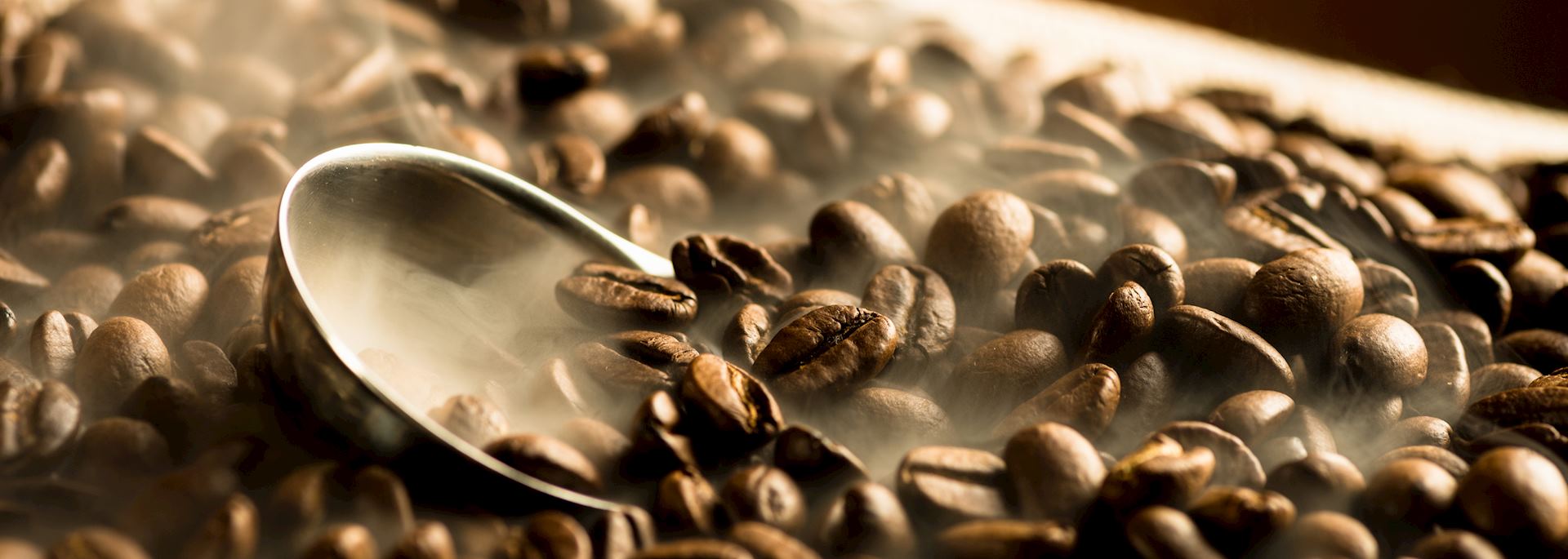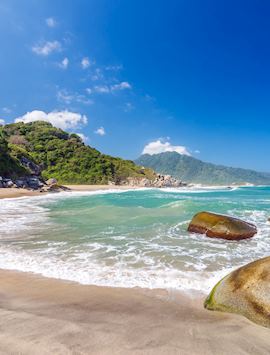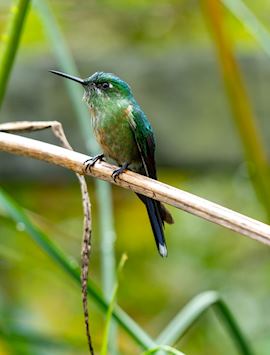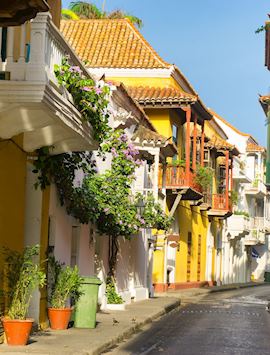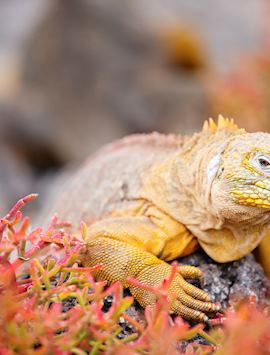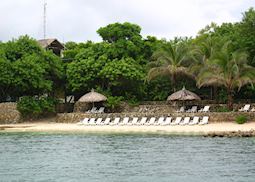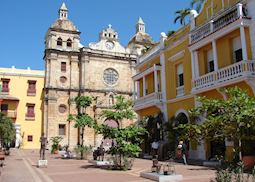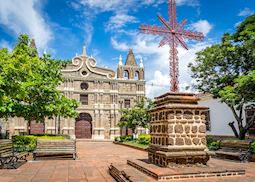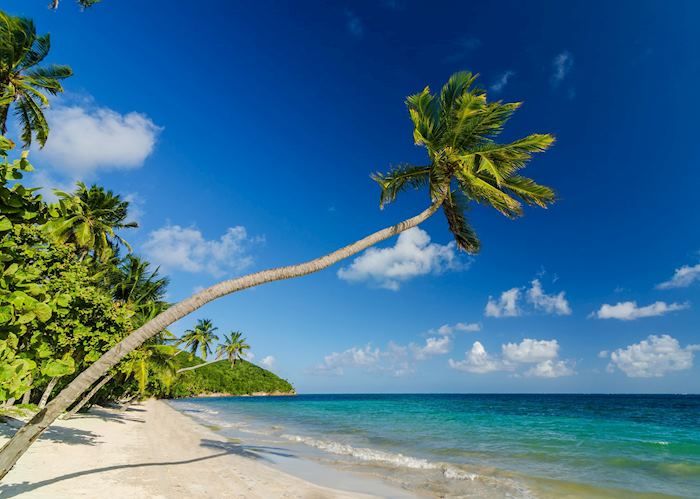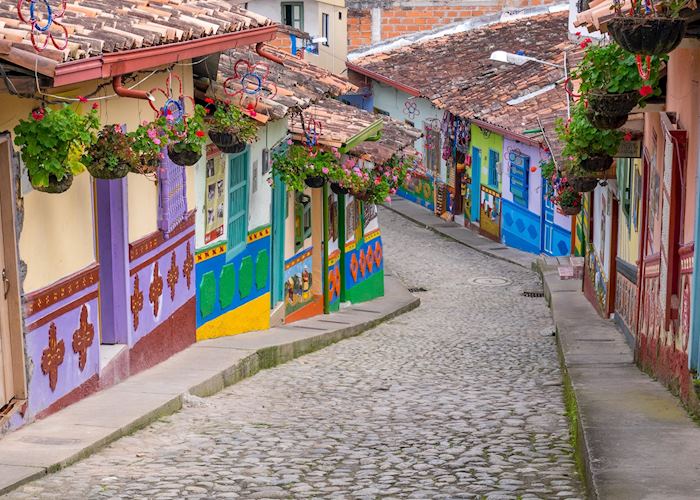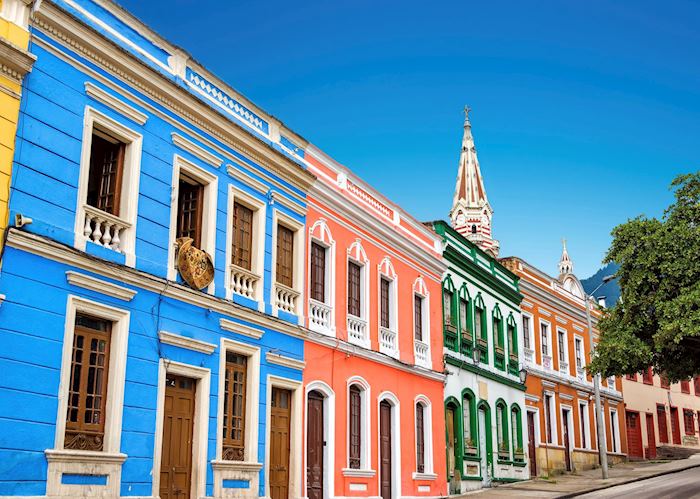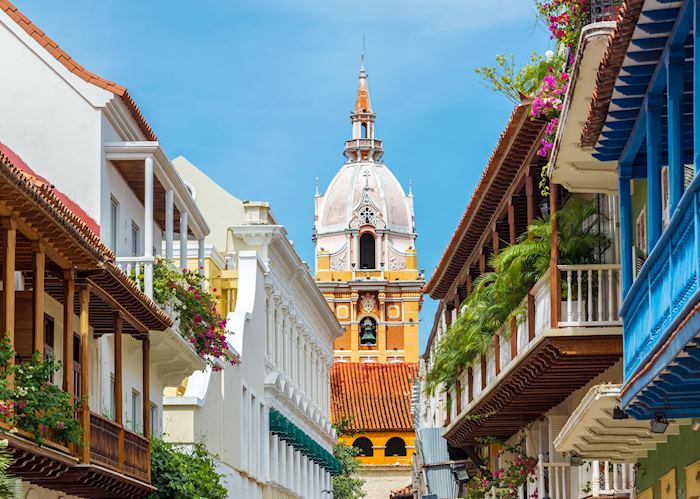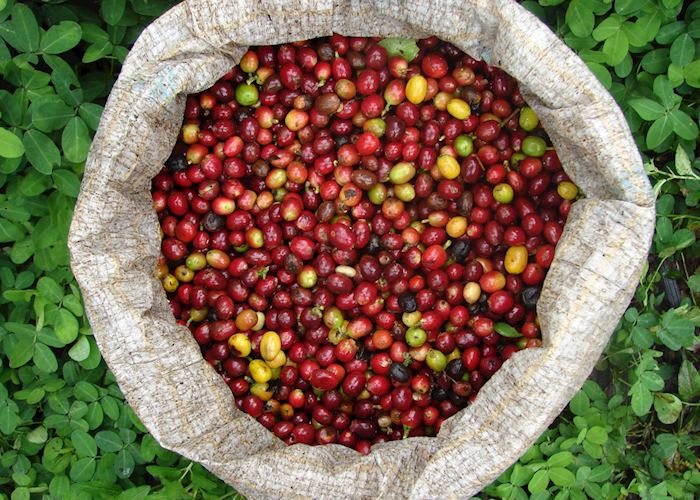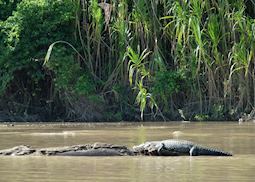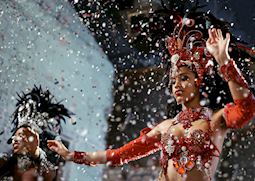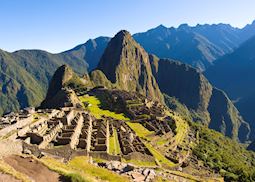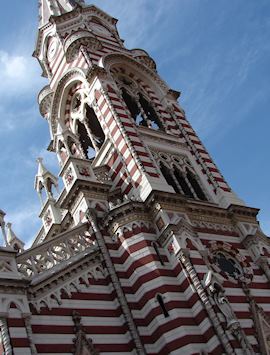
Colombia is an emerging destination, enjoying stability and economic prosperity after decades of conflict. Our specialists have been visiting for a number of years now, and they’d encourage you to travel to Colombia before everyone else catches on.
Like South America in miniature, Colombia is a lively medley of Andean cities, Amazon basin, colonial towns and stately haciendas. But, it has its own one-of-a-kind characteristics, too: wax palms rising like ships’ masts in the Zona Cafetera (where you can taste some of the world’s best coffee), a cathedral hollowed out of a salt mine, and San Agustín, a set of pre-Inca ruins that still confound archaeologists. Our specialists can arrange for your holiday to Colombia to take in the urban regeneration projects of Medellín, the splashy buildings of Cartagena — painted as if to match Colombia’s array of tropical fruits — and private island hotels off the Caribbean coast.
Suggested tours for Colombia
These tours give you a starting point for what your holiday to Colombia could entail. Treat them as inspiration, as each trip is created uniquely for you.
Suggested activities for Colombia
Whatever your interests, our specialists will build activities into your trip that connect to how you want to experience Colombia.
-
Day trip to Isla Majagua ![Hotel San Pedro de Majagua, Islas del Rosario]()
Day trip to Isla Majagua
CartagenaDay trip to Isla Majagua
Time to take to the waters of the Caribbean for a day trip out to Hotel San Pedro de Majagua located on one of the islands of the Isla Rosario chain.
View details -
Half-day tour of colonial Cartagena ![Cartagena, Colombia]()
Half-day tour of colonial Cartagena
CartagenaHalf-day tour of colonial Cartagena
This leisurely half-day tour on foot of Cartagena’s idyllic old colonial town works wonderfully as a small history lesson combined with some stunning architecture.
View details -
Santa Fe de Antioquia tour ![Santa Fe de Antioquia, Colombia]()
Santa Fe de Antioquia tour
MedellínSanta Fe de Antioquia tour
You will be met from your hotel by your driver and taken directly to Santa Fe de Antioquia for your full day tour of the town, a journey of approximately 1.5-2 hours to reach Santa Fe.
View details
Why travel with Audley?
- 100% tailor-made tours
- Fully protected travel
- Established for over 25 years
- 98% of our clients would recommend us
Best time to visit
Our specialists advise on the best months to visit Colombia, including information about climate, events and festivals.
Request our brochure
Covering all seven continents, The World Your Way shows you how you can see the world with us. It features trip ideas from our specialists alongside hand-picked stays and experiences, and introduces our approach to creating meaningful travel experiences.
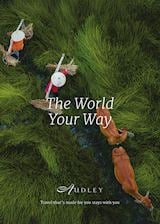
Useful information for planning your holiday in Colombia
The official language of Colombia is Spanish. English is spoken in larger cities and the main visitor destinations.
The currency of Colombia is the peso ($ or COP). ATMs are widespread, especially in the major cities. Most machines take all credit cards, as well as Cirrus and Plus cards. Visa and Mastercard are widely accepted, as are debit cards.
In Colombia, you should try bandeja paisa — a platter of white rice, red beans, ground beef, sausage, plantain, morcilla, chicharrón, arepa, avocado, and a fried egg. Arepas are fried cornbread that you’ll find everywhere, usually stuffed with meat, chicken, cheese, or vegetable fillings. Ajiaco (chicken and potato soup) is another popular dish.
To drink, Colombia is world-renowned for its coffee and its rum, but you’ll also see aguardiente, an anise spirit, everywhere.
You’ll find the food scene in Bogotá, Medellín, and Cartagena is lively and constantly improving with some excellent fine dining options showcasing a much more varied side of Colombian cuisine.
A service charge is normally included in your total at Colombian restaurants, so it’s not common to add an additional tip unless you’ve had exceptional service. Taxi drivers, porters, and housekeepers don’t expect a tip.
For the latest travel advice for Colombia, including entry requirements, health information, and the safety and security situation, please refer to the Foreign, Commonwealth & Development Office website.
Colombia offers a vibrant medley of experiences from exploring rainforests and snow-capped mountains to historic cities and sandy beaches. Whether you’re interested in history, wildlife, food, or quiet relaxation, Colombia offers it all in a single destination.
You can explore the historic streets of the country’s cities visiting cathedrals, galleries, and museums, discover the vestiges of mysterious pre-Inca cultures, track wildlife though lush rainforest, and see the finest Colombian coffee growing in the highlands.
Colombia also has two coastlines with forest-fringed beaches offering the chance to combine wildlife viewing with time spent simply relaxing under an umbrella in a cooling sea breeze.
Colombia offers stays in lovingly restored heritage buildings, intimate boutique townhouses, and luxurious five-star hotels. Bogotá and Cartagena offer a wide range of places to stay but in rural Colombia, the options can be more limited, although the choice is improving all the time.
For example, you could relax in a 17th-century convent now complete with gym and spa, stay on a working hacienda in the coffee region to learn about rural life, or retreat to the beach with a stay in a secluded island escape or a thatched casita on the waterfront.
For some more ideas, browse our collection of places to stay in Colombia.
A trip to Colombia could combine the urban delights of Cartagena and Bogotá with visits to the Amazon, the Caribbean Coast, or the Zona Cafetera. You could explore the cobbled streets of cosmopolitan Bogotá or the Caribbean culture of Cartagena, before heading off to see the Andean peaks and lush green valleys of the cool Zona Cafetera highlands where most of Colombia’s coffee is grown.
Alternatively, you could search for wildlife in the jungles of the Amazon or the national parks on the Caribbean Coast where dense rainforest fringes white-sand beaches.
In Colombia you can see a wide variety of wildlife from monkeys and capybaras to whales and dolphins. Thanks to its many ecosystems, Colombia’s wildlife is diverse with the lush lowland forests of the Amazon offering a chance to spot pink river dolphins, parrots, toucans, and monkeys, among many other species.
The tropical grasslands of Los Llanos are home to capybaras and roseate spoonbills, while the forests and moorland around Minca are home to about 300 bird species. Along the Pacific Coast you could go whale watching or see leatherback, green, and hawksbill turtles hatching on the beach.
It takes around 11 hours to fly from the UK to Colombia.
The time zone in Colombia is UTC-5 hours. Daylight Savings Time isn’t observed here.
The best way to get around in Colombia is by road and air. We can arrange a private car and driver to take you between destinations, and book internal flights for longer distances.
Use our travel tool to find up-to-date visa and passport requirements for Colombia. Enter where you’re travelling to and from (including any stopover destinations en route or flight layovers), along with your intended travel dates and passport details, for a full list of requirements.
Your doctor can advise you on recommended vaccines for Colombia, but you should also ensure you’re up to date with the recommended vaccinations for your home country. You can also check the suggested vaccinations on the Travel Health Pro website.
Colombia in pictures
Our expert guides to travelling in Colombia
Written by our specialists from the viewpoint of their own travels, these guides will help you decide on the shape of your own trip to Colombia. Aiming to inspire and inform, we share our recommendations for how to appreciate Colombia at its best.
-
Where to go in the Amazon: planning your journey into the rainforest ![Caiman, Peruvian Amazon]()
Where to go in the Amazon: planning your journey into the rainforest
Where to go in the Amazon: planning your journey into the rainforest
Audley specialist Rebecca shares why she loves the Amazon, but explains that planning a trip there comes with a few caveats. She suggests you ask yourself: what is it I really want to see and do in the rainforest?
Read this guide -
What to do in Colombia: our highlights guide ![Colorful façades, Bogotá]()
What to do in Colombia: our highlights guide
What to do in Colombia: our highlights guide
From cultured Cartagena to youthful Medellín, you can witness how Colombia is reinventing itself on a tailor-made Audley trip.
Read this guide -
Machu Picchu plus one: tried-and-tested South American combinations ![Machu Picchu, Peru]()
Machu Picchu plus one: tried-and-tested South American combinations
Machu Picchu plus one: tried-and-tested South American combinations
Did you know that thanks to ever-improving flight connections, you can easily combine Machu Picchu with other South American destinations such as the Galapagos and Argentina — without the need to extend your trip drastically? Our specialists explain how.
Read this guide -
Festivals in Central & South America ![Virgen del Carmen festival, Cuzco]()
Festivals in Central & South America
Festivals in Central & South America
Latin America boasts many festivals, from the solemn processions of Holy Week to the raucous party of Carnival to the recreated glory of an Inca sun ritual. Let our specialists suggest where to go to discover these vibrant cultural events.
Read this guide

